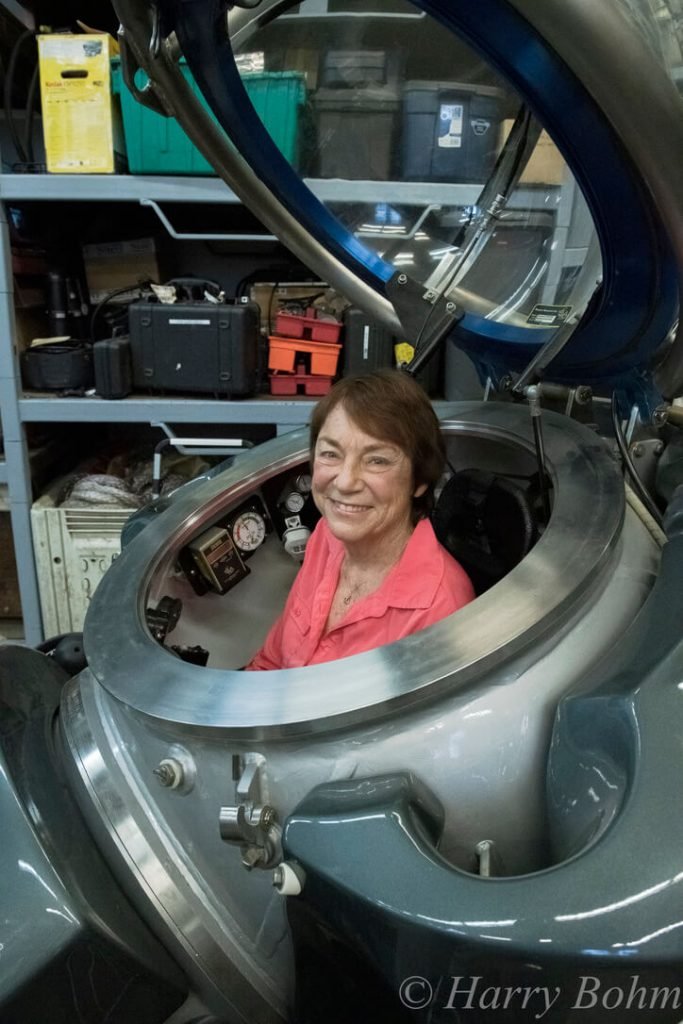About
Vickie Jensen
When people ask me what I’m writing, their eyebrows invariably shoot up when I reply “B.C.’s subsea history.” Yes, it’s an unusual subject, especially since I spent my childhood in the cornfields of the U.S. Midwest. But I vividly remember the rare occasions when my father told me about his early Navy days as a helmet diver and how he’d almost drowned when his dive attendant got distracted and hadn’t immediately hauled him to the surface after his helmet flooded. Like so many others of my generation, I was captivated by the early television show “Sea Hunt,” in which Lloyd Bridges portrayed Mike Nelson, a former U.S. Navy frogman. For me, the underwater world has always been dangerous and exciting.
As a child, I dreamed of a pair of magic glasses that would let me see underwater. That fantasy was no doubt reinforced the summer I dropped my mother’s diamond ring off a lakeside dock. My father shouted for everyone in the water to stay absolutely still, then grabbed a diving mask from a nearby kid, dove down and located the ring. Magic glasses, indeed!
Decades later, having moved to the coast of British Columbia, I landed the dream job of editing Westcoast Mariner magazine. Every month for four years, I went out on a different type of coastal workboat—tugs, charter boats, dredges, Coast Guard launches, pile drivers, pilot boats–in order to write about the vessel, its crew and their jobs. I am pretty sure that I was the only woman whose “Dress for Success” wardrobe included a pair of gumboots in her bottom desk drawer.
One day, a reader named Harry Bohm contacted me. “You write about everything happening on the water. What about covering what’s happening underwater?” At the time, Harry had traded working on tugs for managing Simon Fraser University’s Underwater Research Lab. He introduced me to the world of submersibles and the alphabet of unmanned craft like ROVs (Remotely Operated Vehicles with their long tether to surface power) and AUVs (tetherless Autonomous Underwater Vehicles). I also began meeting some of the remarkable folks who were working and researching underwater. He was right—there was an entire subsea world to learn and write about!
A year later, Harry was back. “Ok, now I want you to write the book I wish I’d had as a kid.” He told me about being fascinated by Jacques Cousteau’s subsea habitats and, of course, the TV show “Sea Hunt.” In secondary school, he’d built a miniature Cousteau-habitat for his science fair project and actually raised a mouse underwater. Now, he was working on the concept of small hardware-store-technology ROVs that even kids could build and operate. Intrigued, I said “yes!”

A year later, we published Build Your Own Underwater Robot and Other Wet Projects, including a glowing recommendation from adventure-author Clive Cussler for the back cover. The coincidence was that the do-it-yourself underwater robot projects detailed in that book were simply a high-tech version of the magic glasses I’d dreamed of as a child.
Several years later, Harry and I teamed up with Dr. Steve Moore, an underwater robot-building zoologist and professor at California State University Monterey Bay (CSUMB). The three of us invested years writing the landmark textbook Underwater Robotics: Science, Design & Fabrication, published by the Marine Advanced Technology Education (MATE) Center in Monterey, CA. It provides an important resource for the “underwater robots in the classroom movement,” which is fostered by MATE’s annual Student ROV Competition, an event that challenges bright young minds from around the world. All these opportunities, in combination with hundreds of hours of recent interviews, have shaped my fascination with the subsea world.
From the outset, I knew that the title of this book had to be DEEP, DARK & DANGEROUS: The Story of British Columbia’s World-class Undersea Tech Industry. Those first three words perfectly describe the risk and conditions of underwater work. Daunting as they are, those words never defeated the determination of B.C. underwater pioneers. They routinely took on risks of all kinds, testing their bodies, their inventions and their financial resources. They refused to believe something was impossible—it just hadn’t been done yet.
Early on, I was amazed to realize that hardly anyone outside the subsea industry knew anything about these risk takers or their accomplishments. As well, it was little known that British Columbia developed a reputation as the subsea NASA of the north, beginning in the mid-1960s. That legacy is still acknowledged globally and the subsea industry in B.C. is growing.
Strangely, British Columbia’s undersea story is a vital chapter of largely unknown Canadian history. Determined to change that glaring omission, I proposed the idea to Harbour Publishing. Howard White immediately agreed. The result is DEEP, DARK & DANGEROUS: The Story of British Columbia’s World-class Undersea Tech Industry, due out in the fall of 2021.
I’ve always been fascinated by the work that people do. That’s why I spent three months with a totem pole carving crew for my first non-fiction book, Totem Pole Carving: Norman Tait Bringing a Log to Life. Next, I interviewed 110 memorable women who work B.C. boats and ships for Saltwater Women at Work. Then I collaborated with T. Arthur McLaren to write Ships of Steel: A British Columbia Shipbuilder’s Story. And when the Vancouver School Board got interested in educating kids about maritime career opportunities, I wrote Working These Waters and helped organize two maritime job fairs for secondary students.
All along for nearly five decades, I’ve also worked with my husband, a linguistic anthropologist at UBC, to produce language and culture resources for First Nations groups in B.C. and Washington state. It’s been a hectic life and career at times, often with little sleep, but I wouldn’t trade it for anything!



